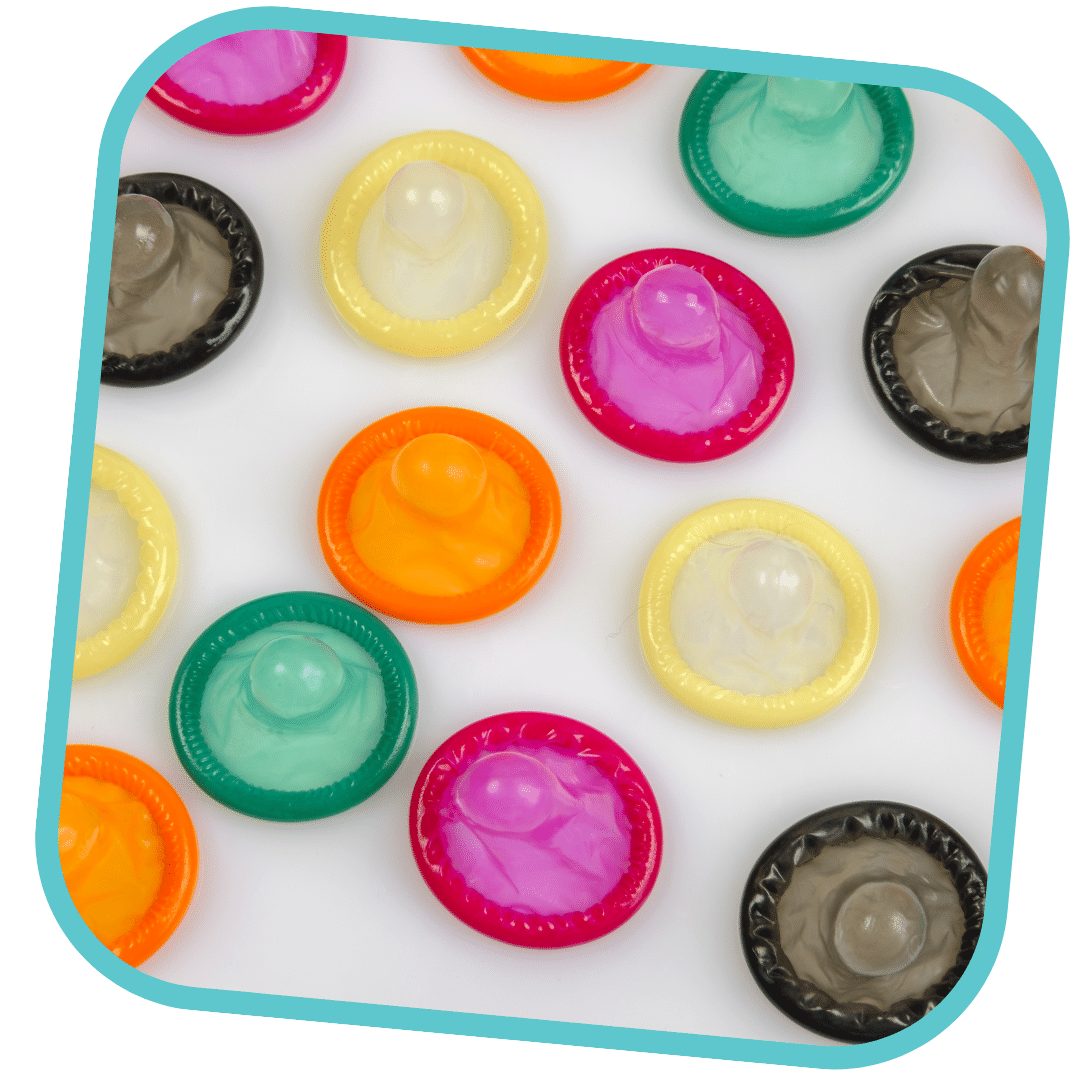Better Condom Education for High School Students: Putting Data into Practice
By The ETR Team | February 8, 2024
In honor of National Condom Month, we’re here to discuss innovative research on condom misuse and effective strategies in condom education. What are the most common errors high school students make about condom use? Thanks to some recent research by ETR and our partners at Public Health, Seattle & King County, we can share some insights on that question.
Keep reading to learn more, and check out our brand new free, downloadable tip sheet about condom education below!
Condom error in high school students: Understanding where we fail
Karin Coyle, PhD; BA Laris, MPH; Pamela Anderson, PhD; Heather Franks, MA; Andrea Gerber, MSEd*; Kari Kesler, MA*
ETR, *Public Health, Seattle & King County
Paper presented at APHA 2018 Annual Meeting and Expo. View abstract here.
What We Learned
In this study, it was discovered that condom breakage and slippage were common among students who reported recent sexual activity within the previous three months. At baseline, 25% of 1,596 ninth and tenth graders surveyed reported ever having vaginal sex. About 6 in 10 of these reported having had sex in the previous three months. Among these currently active students, about 1 in 4 reported experiencing condom breakage. Similarly, about 1 in 4 reported a condom slipping off.
When students were asked about the ways they were using condoms, 7 in 10 reported they did not squeeze the tip of the condom before putting it on. Half reported that they did not hold the base of the penis when pulling out.
These are exactly the type of errors that contribute to breakage and slippage. These findings compel us to ask, “How are we teaching condom use to youth, and could we do better at communicating all of the essential steps?”
How We Teach Condom Use
As sexuality educators, teaching about condoms and doing condom demonstrations is something you have probably done before. A common activity to learn about proper condom use is The Condom Line Up Game, where students arrange a collection of cards displaying the steps for using a condom in proper chronological order. Because of the findings in our research, we can tweak the game to better address problems with condom breakage and slippage.
On some versions of the game, the steps: “Add lube to tip, pinch tip, put on penis, and roll down.” is all on a single card. There is merit in consolidating the steps to using a condom. Students may feel that fewer steps will be less overwhelming and make using a condom seem less complex to a learner. However, our research shows that this is exactly the point where students are missing steps. These missed steps increase the likelihood of breakage or slippage. If your game has all of these steps on one card, consider creating new cards to break up the steps!

When teaching this activity, separate those steps out while reviewing the cards and explain why each one is crucial. It takes just a moment to explain that users need to pinch the tip so that when/if ejaculation occurs, the fluids have a place to go. Tell students that if there is air in the condom at this point, there isn’t space for the fluids and the condom could burst! These steps could mitigate condom misuse.
Explain that rolling the condom all the way down to the base of the penis (clarifying that that’s the part closest to the body) and holding onto the condom at the base when pulling out, will help make sure it doesn’t slip off.
We Must Discuss Slippage and Breakage
While condoms are an effective means of contraception and STI prevention, user error decreases effectiveness. After learning about the data points in our research, it may be beneficial to start a brief conversation with students about what to do if a condom breaks or slips off. According to our research above, we know that 25% of students who reported recent sexual activity in the previous three months experienced breakage, and a similar number reported slippage. We do our students a disservice if we pretend that condoms don’t break or slip.
To help students stay proactive about what to do if a condom breaks or slips, talking about topics such as emergency contraception, getting tested for STIs (including HIV), and reflecting on ways to strengthen their skills at completing all the steps for proper condom use ensures your condom education is comprehensive.
Data Helps Us Boost Our Impact
One of the most exciting outcomes of research on adolescent health is sharing findings with front-line educators and practitioners. Based on the data, educators can adjust and strengthen the positive impact of their work. ETR is dedicated to gathering data that can improve health outcomes with youth.
Want More Resources on Condom Education?
Check out our new, free downloadable tip sheet where we break down important messages for health educators to share with young people!
Check out the ETR store to choose from over 40 materials around condom use! Grab things like condom demonstration kits and pocketbook guides to make condom education easy.
This is an update to a previously released blog by Mia Barrett on January 31st, 2019. Mia is a Project Director at dfusion, an organization that develops, tests, and evaluates digital innovations to improve health and well-being. She is also a sexuality educator for young adults and health care professionals, and received her Masters of Education in Human Sexuality at Widener University. During her time at ETR, she served as a research associate and a project coordinator for sexuality education projects.




